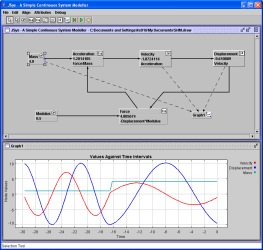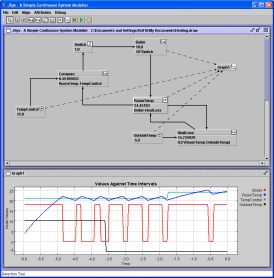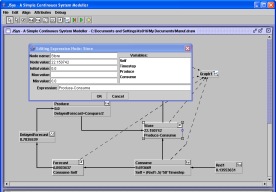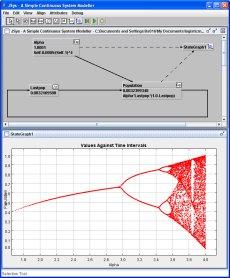
Simple Harmonic Motion
A simulation of simple harmonic
motion of a mass on a spring. The
simulation features two integrators to solve the differential equation:
Acceleration = d2X/dT2 = Force/Mass,
where X is the displacement from the equilibrium position
and T is time . The first integrator determines the
velocity from the acceleration and the second determines the position
from the velocity. The force is calculated according to
Force = -Displacement * SpringConstant.
In the example shown the mass
is increased to four times its original
value part way throught the simulation resulting in an increase in the
period of oscillation..



